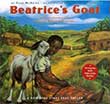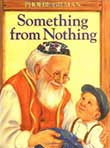Education Resources Recommended by Eva Johnston
Eva Johnston is a senior economic education specialist at the St. Louis Fed. Eva has National Board Certification and an M.A. in education. She had a 28-year career teaching high school economics, government and history.
Eva's favorite resources are listed below.
For Pre-K-K Classrooms

Betty Bunny Wants Everything - Kiddynomics Lesson 1
Students learn about wants, choice, and scarcity. They listen to the story Betty Bunny Wants Everything and identify all the wants that Betty Bunny has at the toy store. Students learn that because of scarcity, they must make choices. They practice making choices by selecting a treat they want, a toy for one of the book characters, and finally a school item. They sing a song about choices and scarcity.
Subjects and concepts covered in this lesson include decision-making, economics, personal finance, scarcity and wants.
For Elementary Classrooms

Beatrice's Goat Lesson for Grades 3-5
In this lesson, students listen to a story about Beatrice, a little girl from Uganda, who receives a goat and the impact of that goat on her family. They learn what it means to save and use estimation to decide whether or not people have enough money to reach a savings goal. They also work through a set of problems requiring that they identify how much additional money people must save to reach their goals. Students learn what opportunity cost is and identify the opportunity costs of savings decisions made by Beatrice and her family.

Something from Nothing Supplemental Math Activity for Grades 1-2
After listening to the story Something from Nothing, students use tangrams to create Joseph’s blanket and the various items Grandpa makes from the blanket. They identify the opportunity cost of each item they create. Students fill in a graph to classify shapes according to defining attributes and color and then interpret the data.
For Middle School Classrooms

Tools for Teaching Economics Using "Lawn Boy" Lesson for Grades 6-8
This six-session curriculum for grades six through eight corresponds to the book Lawn Boy by Gary Paulsen. Each session integrates economic content related to specific chapters of the book. Topics include: capital markets, circular flow, demand, diversification, supply, markets, opportunity cost, productivity, and risk.
For Middle School and High School Classrooms
10 FRED Activities in 10 Minutes
Take a 10-minute guided tour of the newly updated FRED, the St. Louis Fed's free economic data website. Simple step-by-step activities equip users to find and graph economic data, mastering FRED's new look and feel. The guide also shows how to customize, save, and share a FRED graph.
Hamilton's National Bank
In this lesson, students participate in two rounds of a role play to help them understand the role of banks in facilitating economic growth through loans. Round 1 is conducted without a bank. After the first round, students read excerpts from Secretary of the Treasury Alexander Hamilton’s 1790 report to Congress in which he proposes a national bank because the United States had few banks at the time. Students then conduct Round 2 of the role play with a bank. After the round, students read excerpts from and summaries of the statute creating a national bank, Thomas Jefferson’s opposition, and Hamilton’s rebuttal.
The Acceleration of the Great Migration, 1916-17
Students work in groups to examine excerpts from primary source documents. They identify social and economic factors affecting specific categories of people when the Great Migration accelerated in 1916 to 1917: black migrant workers from the South, southern planters, southern small-farm farmers, northern industrialists, agents, and white immigrant workers in the North. Each student group creates a "perspectives page" to post for a gallery walk where students analyze the causes of the Great Migration and the changes it brought to both the North and South. Students also discuss the specific economic factors that influenced the Great Migration: scarcity, supply, demand, surplus, shortage, and opportunity cost. Using the PACED decisionmaking model, they analyze the alternatives and criteria of potential migrants.
The Art of Decisionmaking Online Course
If you look at what psychologists consider to be high-level stressors, you'll find a list of about 40 life events. We have no control over many of these events, but for more than half, we do. So much of our stress and success in life depends on the decisions we make. In this short course, your students will learn the economic underpinnings of the need to make decisions, why every decision bears a cost, and how to make informed decisions.
For High School Classrooms
Government Budgets Online Course
The federal government's budget is in the news almost every day. We hear about programs being implemented and others being reduced or eliminated in lawmakers' attempts to agree on a final budget. Regardless of the decisions being made, peoples' opinions and wants vary. As you can imagine, a federal lawmaker's job is not easy. In this course, your students will play the role of a freshman lawmaker in the U.S. House of Representatives trying to serve his or her constituents' goals and the long-term goals of the United States. Along the way, they'll learn about the federal budget process and how federal government initiatives and programs are funded.
Making Personal Finance Decisions Curriculum Unit
This curriculum teaches valuable personal finance lessons grounded in economic theory. The curriculum is divided into 10 themed units, with each unit containing two lessons. The twenty individual lessons employ a variety of teaching strategies designed to engage students in the learning process and equip them with the knowledge and skills necessary to make informed personal finance decisions.
More:
View upcoming events and webinars.
Subscribe to the Econ Lowdown e-newsletter. It's the most convenient way for economics and personal finance teachers to stay up-to-date on the latest videos, podcasts, curriculum and classroom activities from the St. Louis Fed. Each issue also includes a list of upcoming events where teachers can get ideas for their classrooms, earn continuing education credit and network with their peers. Other email alert options are available.
Questions?
You can contact Eva at 314-444-8567 or Eva.K.Johnston@stls.frb.org.


